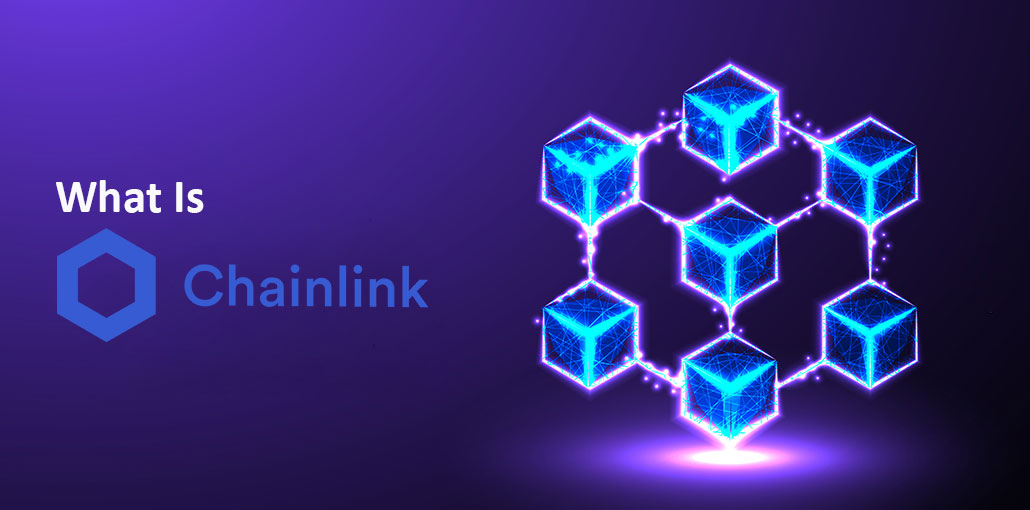Chainlink (LINK) is an open-source blockchain project that aims to connect the world’s smart contracts with the real world by enabling secure access to external data feeds and other APIs.
By facilitating these connections, Chainlink allows smart contracts to become useful beyond their current scope in a far wider range of applications, including supply chain management, payment services, insurance services, and more. Read on to learn more about what ChainLink is and how it works.
What Is Chainlink?
Chainlink is an Ethereum-based middleware, allowing smart contracts on Ethereum to access key off-chain resources like data feeds, various web APIs, and traditional bank account payments.
This technology enables anyone to write a smart contract that can use services traditionally only accessible to centralized applications (such as Google Sheets or PayPal). The LINK token (LN) powers these transactions.
Also read: How to Build an ERC Token Without Coding
As such, we believe it will become an essential part of every serious blockchain project. To understand why let’s look at some examples of what you could do with Chainlink today:
- A smart contract can query any publicly available data source, including stock prices, weather updates, and sports scores. If your business logic requires real-time information from one of these sources to function properly (for example, if you are building a decentralized exchange), then Chainlink would be your solution.
- You could pay someone using a credit card or PayPal directly from within your smart contract. Using Chainlink, you would simply connect to one of these existing payment providers via API and send them money when certain conditions are met (e.g., when goods are delivered).
- You could pay someone in cryptocurrency directly from within your smart contract. In other words, you could create a system where two parties can make trustless peer-to-peer payments without ever interacting with a cryptocurrency exchange.
All of these capabilities are possible today, but they require manual configuration by developers and cannot be used by smart contracts out of the box. Chainlink aims to solve these problems by creating an open standard for dApp developers to request off-chain data, crypto payments, and more while paying LINK tokens for each transaction made through their network.
Chainlink Price Prediction
The Chainlink coin rose steadily from its release in September 2017 until November 2021. The Chainlink coin market capitalization went from $12 million to $300 million in just over seven months, recording an impressive 3,350% increase.
In terms of market cap, it is ranked 73rd globally, with a total value of around $300 million. As of 7th April 2022, it is currently trading at $15.48 per token, which translates into a market cap of $7.2 billion.
Although these figures are still small compared to some other cryptocurrencies like Bitcoin or Ethereum, they are impressive given that they represent such a new project. However, if you believe in its potential, now could be the best time to invest before it gets too late!
For more information, check Chainlink price predictions here.
How Does It Work?
Chainlink allows smart contracts to securely access off-chain data feeds, web APIs, and traditional bank account payments. If you want to program an application to transfer money when a particular set of criteria are met, then you need input from external systems like Google Maps or bank servers.
These systems aren’t built for decentralized applications, so they’re not connected to blockchains by default. This is where Chainlink comes in; it connects smart contracts with key external resources via secure APIs and delivers payment in local currency.
Also read: The Ultimate Guide to Creating a Non-Fungible Token?
Chainlink’s Competition
The marketplace for decentralized applications that require payment functionality has a few blockchain-based competitors. These are some of the leading and commonly used alternatives to Chainlink:
Stellar Lumens
Stellar is a decentralized open-source protocol for low-cost digital currency to fiat money transfers that permits cross-border transactions between any two currencies. Stellar also offers payments on its blockchain via its native currency, lumens (XLM).
Ripple
A second option with similar offerings to Chainlink is Ripple. It, too, can act as an intermediary between different ledgers while charging a fee for these services—which makes sense because Ripple itself started as an inter-ledger protocol.
Omega One
Another company similar to Chainlink in purpose but different in execution is Omega One. It’s building a decentralized exchange specifically designed for digital assets. However, unlike Chainlink, Omega One doesn’t have smart contracts at its core; instead, it uses distributed ledger technology (DLT) to build what’s called a trustless trust. This means you can trade cryptocurrency without needing to trust your counterparty or having access to their funds or private keys.
See how Chainlink compares to other cryptocurrencies in terms of daily transactions.
The Future Of Blockchain Technology
In 2018, blockchain technology exploded into the public consciousness thanks to a massive boom in cryptocurrency value. However, there are many more applications for blockchain than those associated with finance.
In particular, blockchain technology has incredible potential to impact supply chains by making them more efficient. Chainlink is one such example that can be used to automate and simplify everyday transactions.










Leave a comment